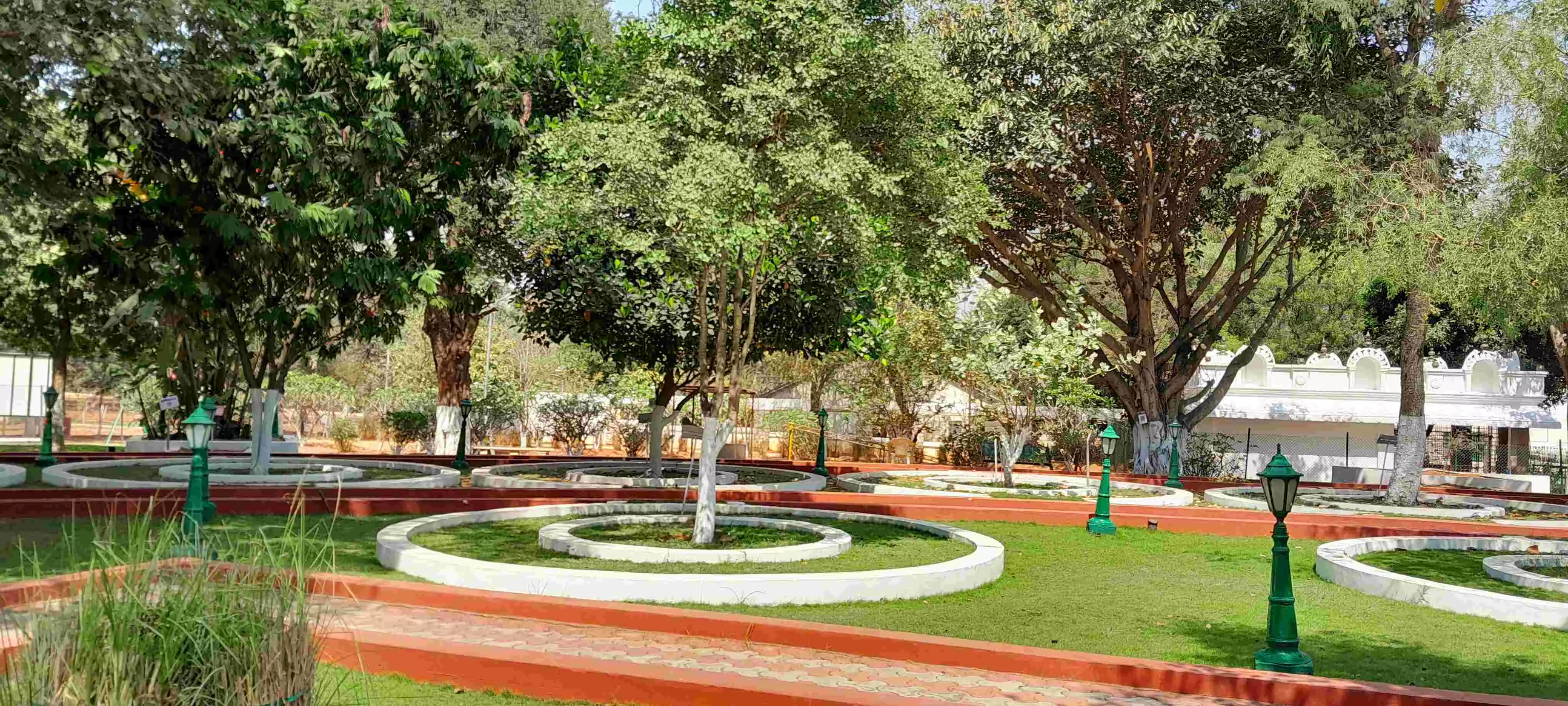Hyderabad’s pride: All you want to know about Nakshatra Garden in Rashtrapati Nilayam
It's a part of the larger Rashtrapati Nilayam complex, the President's retreat in Hyderabad, and is now open to the public
By Beyniaz Edulji
Hyderabad’s pride: All you want to know about Nakshatra Gardens in Rashtrapati Nilayam
Hyderabad: Plant lovers don’t need an excuse to visit the Rashtrapati Nilayam Gardens in Bolarum, Secunderabad. There is an ancient Step-well, a Rock Garden and Water fountain, a Palmatum with 31 kinds of palm trees, a Floral Clock, Fruit Orchards with custard apples, mango, guava, coconut, chikoo, amla and pomegranates, a Nature class in Gurukul Style open to the sky, a Sandalwood garden and a Rainbow tree park, a Butterfly Garden, Herbal Garden and a Persian Well.
Nakshatra Garden
The Nakshatra Garden at Rashtrapati Nilayam in Secunderabad is unique in the 97-acre premises, designed with plants representing different zodiac signs and constellations or Nakshatras based on Vedic astrology. It's a part of the larger Rashtrapati Nilayam complex, the President's retreat in Hyderabad, and is now open to the public.
History:
Former President of India, Pranab Mukherjee, inaugurated the ‘Nakshatra Vatika’ on July 06, 2015, at Rashtrapati Nilayam Gardens, Bolarum, Secunderabad, and it was open to the public along with the other gardens of Nilayam in the first week of January 2016.
Layout based on Vedic Astrology
The layout of ‘Nakshatra Vatika’ has been developed in various geometrical combinations corresponding to the Sree Chakra of Vedic astrology on a 0.91-acre plot. The garden layout is based on the Sree Chakra, a geometrical representation in Vedic astrology, with trees and plants corresponding to the nine planets or Navagraha, twelve zodiac signs or Rashis, and twenty-seven Nakshatras.
In the center, the formation is square-shaped and accommodates nine squares to represent the Navagraha or 9 Planets. Each square is planted with a particular tree or plant variety that represents the respective planet and is placed in of astronomical direction. The first inner circular band is divided into 12 small circles at parts of 30º each, corresponding to the 12 Rashiorzodiac signs. Each has a plant that represents the particular zodiac sign. The outer circular band consists of 27 parts of 13º- 20’ each with small circles each of which represents a Nakshatra or Star, planted with a representative tree or plant of that particular star. In all, 48 trees and plants representing 9 Navgrahs, 12 Rashi, and 27 Nakshatra are present in the Garden. Besides these, the Peepal tree, Banana tree, and Bilva have also been placed in appropriate locations in the Vatika, bringing the total to 52 trees.
Specific Plants and Trees
The garden includes a central square representing the Navagraha, an inner circle for the Rashis, and an outer circle for the Nakshatras, each area planted with specific trees and plants associated with the astrological elements.
Knowledgeable Guides
Our guide Shweta gave us a lot of information. For instance, in this garden, Lord Brahma is represented by the Peepal or Ficus Tree, Lord Vishnu by the Banana tree, Lord Shiva by the Bael tree, and Lord Dhanvantari, the founder of Ayurveda, is represented in this garden by the Shami Tree. The guide told us that it was believed that positive energy can be obtained if you know your Rashi and Zodiac sign and plant trees according to these. A lot of college students could be seen completing their projects in this beautiful garden.
Visiting Hours
The Rashtrapati Nilayam, including the Nakshatra Garden, is open to the public from Tuesday to Sunday, 10 am to 5 pm, but the last entry is at 4 pm. Buggies are also available from the gate.